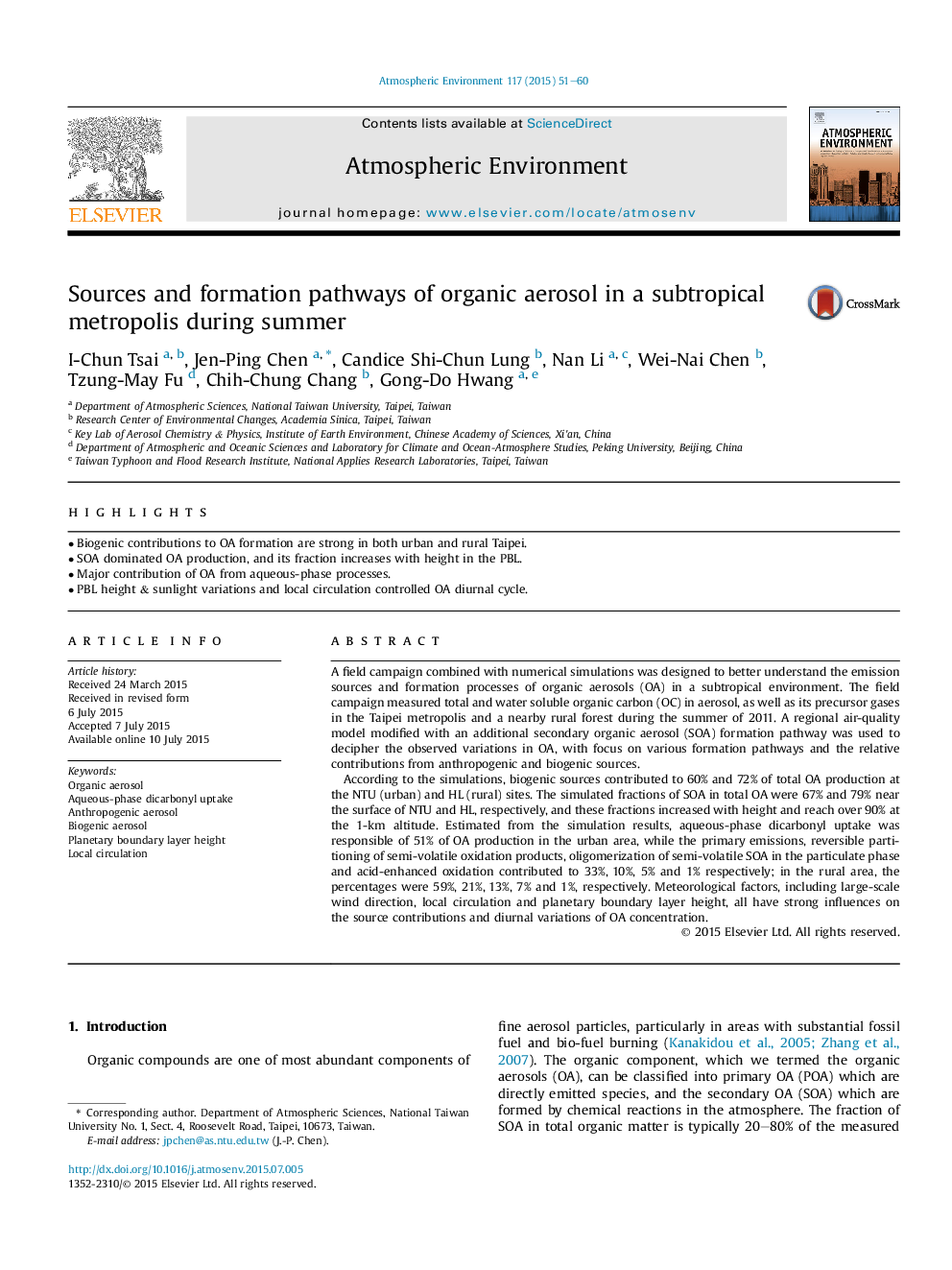| Article ID | Journal | Published Year | Pages | File Type |
|---|---|---|---|---|
| 6337722 | Atmospheric Environment | 2015 | 10 Pages |
Abstract
According to the simulations, biogenic sources contributed to 60% and 72% of total OA production at the NTU (urban) and HL (rural) sites. The simulated fractions of SOA in total OA were 67% and 79% near the surface of NTU and HL, respectively, and these fractions increased with height and reach over 90% at the 1-km altitude. Estimated from the simulation results, aqueous-phase dicarbonyl uptake was responsible of 51% of OA production in the urban area, while the primary emissions, reversible partitioning of semi-volatile oxidation products, oligomerization of semi-volatile SOA in the particulate phase and acid-enhanced oxidation contributed to 33%, 10%, 5% and 1% respectively; in the rural area, the percentages were 59%, 21%, 13%, 7% and 1%, respectively. Meteorological factors, including large-scale wind direction, local circulation and planetary boundary layer height, all have strong influences on the source contributions and diurnal variations of OA concentration.
Keywords
Related Topics
Physical Sciences and Engineering
Earth and Planetary Sciences
Atmospheric Science
Authors
I-Chun Tsai, Jen-Ping Chen, Candice Shi-Chun Lung, Nan Li, Wei-Nai Chen, Tzung-May Fu, Chih-Chung Chang, Gong-Do Hwang,
